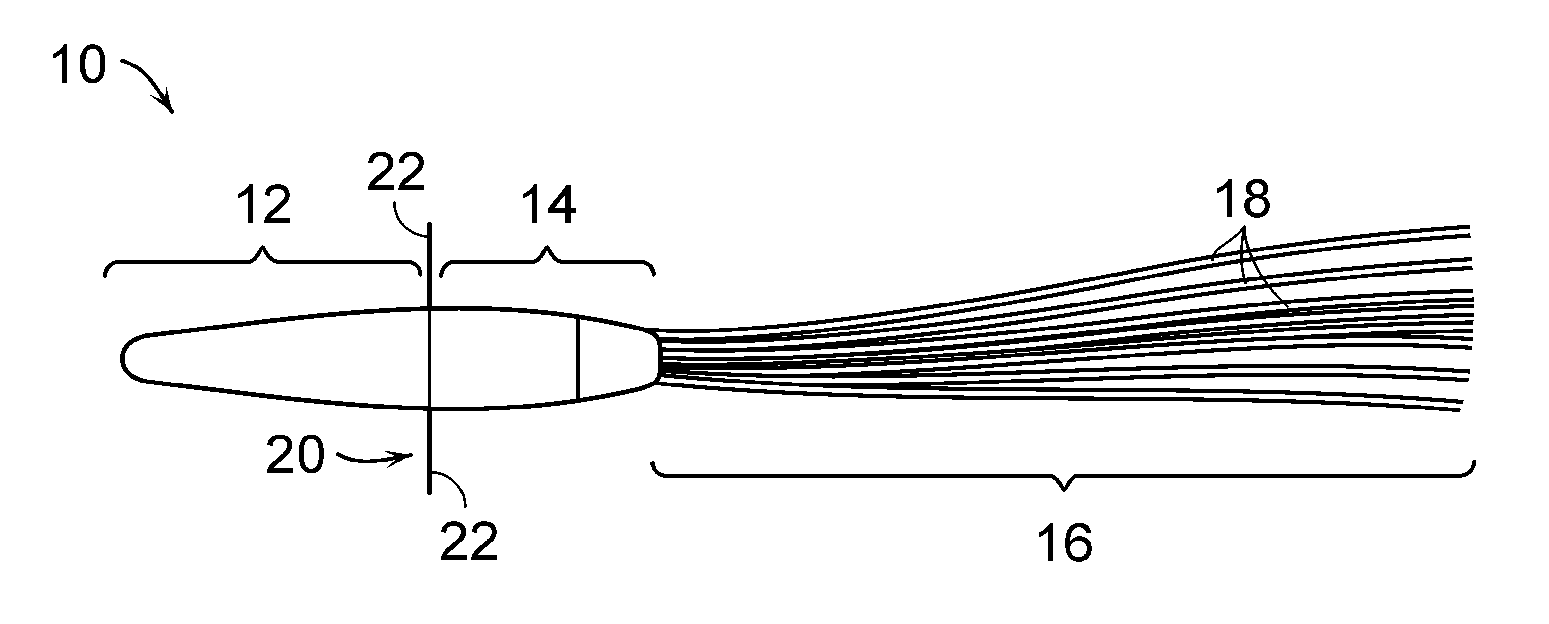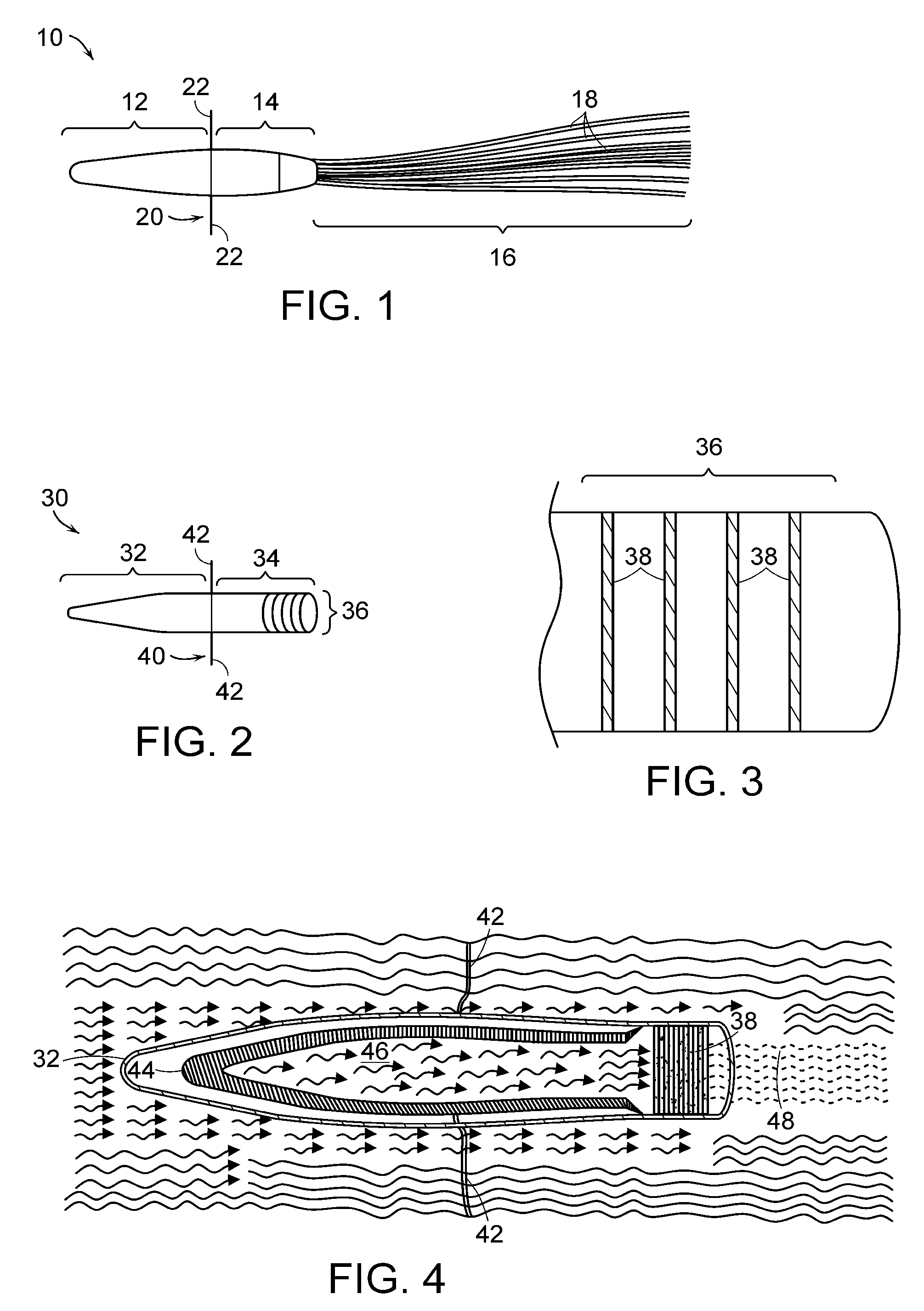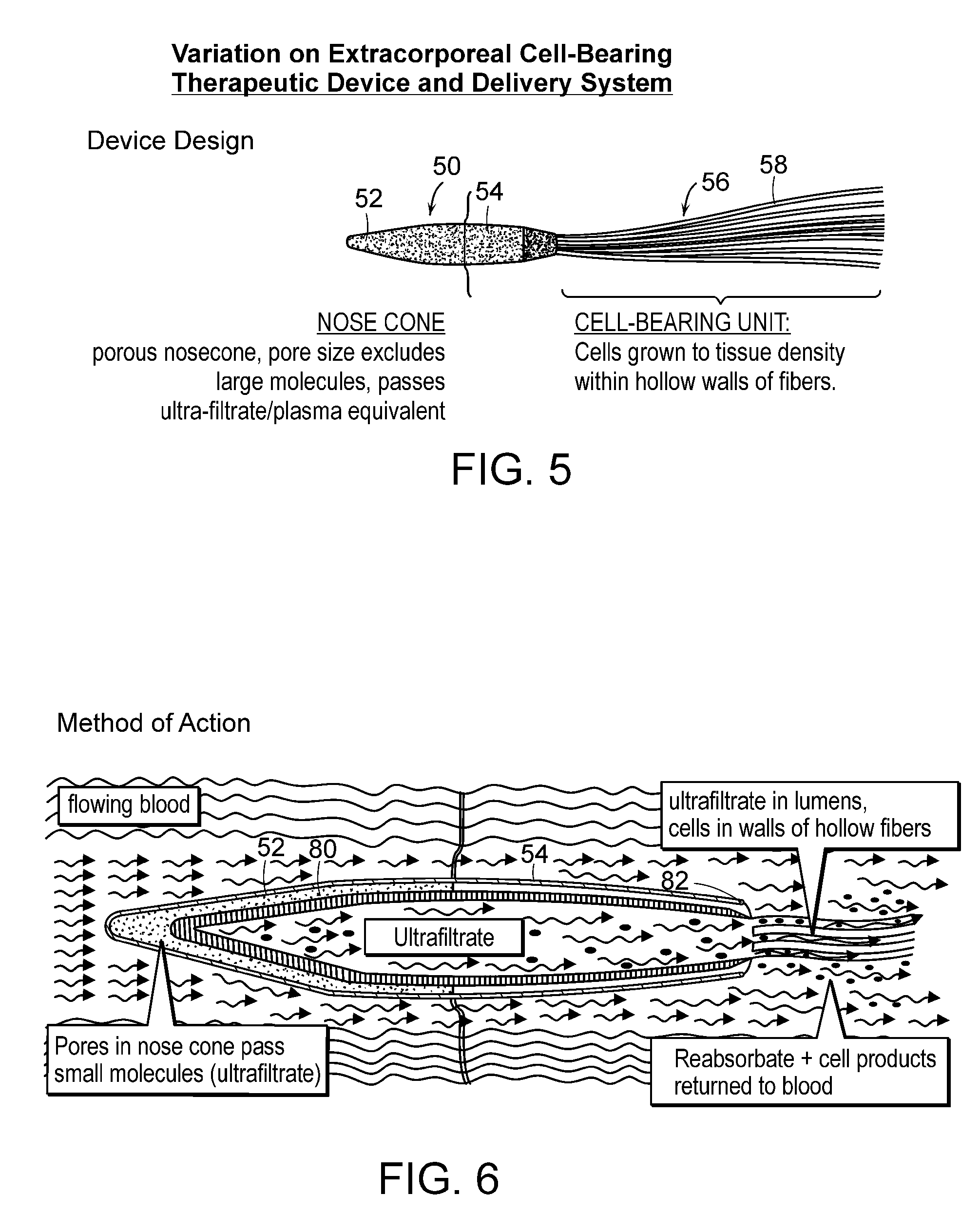Extracorporeal cell-based therapeutic device and delivery system
a technology of extracorporeal cells and therapeutic devices, applied in the direction of blood circulation devices, biocide, catheters, etc., can solve the problems of affecting the treatment effect, and affecting the recovery effect of implantable devices
- Summary
- Abstract
- Description
- Claims
- Application Information
AI Technical Summary
Benefits of technology
Problems solved by technology
Method used
Image
Examples
example 1
[0143]Early prototype formulation of miniaturized cell therapy devices are schematized in FIGS. 1 and 8. Of note, this arteriovenous catheter circuit does not require blood pumps for blood flow through the circuit.
[0144]Fabrication and in vitro testing of one prototype, shown in FIG. 1, will be assessed. This prototype will be fabricated to contain 1.0×108 renal tubule cells in high density growth within the hollow fibers. Preliminary data suggest that 30 hollow fibers (250 μm×10 cm in length) can maintain 1.0×108 cells in a high-flow situation with adequate oxygenation and nutrient supply in vitro. Initial studies with permanent cell lines have demonstrated that a simpler hollow fiber prototype can maintain this degree of cell density over several weeks. If these initial prototypes are able to maintain cell viability in a cell incubator over 3-5 days, they will be available for efficacy testing in the porcine septic shock model. This experiment is an important proof of concept that...
example 2
Testing of Cell-Seeded Nb-Coated, Carbon-Based, Disk-Shaped Substrates
[0155]This example describes the design of the device illustrated in FIG. 13 (referred to in this Example as the “BRECS-d” or “BRECS”), which is constructed such that the disks can be cryopreserved, allowing for a simplified manufacturing process and ease of clinical storage and deployment. Additionally, in circuits utilizing blood as the treated fluid, although the BRECS-d therapy circuit typically utilizes central line catheter access (due to the blood flow rates desired to generate beneficial ultrafiltrate flow rates to sustain the nutritional and oxygen needs of the cells)) and a multiple pump system with pre- and post-BRECS hemofilters, the actual BRECS-d portion of the circuit utilizes ultrafiltrate rather than blood, thus eliminating potential clotting in the cell unit as well as further isolating the cells in the unit from immunological attack. BRECS-d blood therapy circuits, illustrated, for example, in F...
example 3
Development and Testing of a Fully-Freezable or Cryopreservable BRECS-d Unit
[0197]As described above, the BRECS-d device of FIGS. 13 and 14, with its cryopreservable and thawable disks, is useful to facilitate easy manufacturing and quick development at a treatment center. However, the entire device might be cryopreserved, rather than just the disks, to further facilitate manufacturing and deployment. An example of such a fully-freezable device is shown in FIGS. 15 and 16. Accordingly, this example describes the design considerations and testing for development of a fully-freezable embodiment of the treatment devices of the invention, such as that shown in FIGS. 15 and 16. As used in this example, “BRECS” and “BRECS-d” refer to a fully-freezable treatment device, such as that shown in FIGS. 15 and 16.
[0198]The goal is to develop a prototype design to allow the entire BRECS-d unit to be cryopreserved. Additionally, the BRECS-d system will continue to be tested in vitro to assess cryo...
PUM
| Property | Measurement | Unit |
|---|---|---|
| inner diameter | aaaaa | aaaaa |
| diameter | aaaaa | aaaaa |
| diameter | aaaaa | aaaaa |
Abstract
Description
Claims
Application Information
 Login to View More
Login to View More - R&D
- Intellectual Property
- Life Sciences
- Materials
- Tech Scout
- Unparalleled Data Quality
- Higher Quality Content
- 60% Fewer Hallucinations
Browse by: Latest US Patents, China's latest patents, Technical Efficacy Thesaurus, Application Domain, Technology Topic, Popular Technical Reports.
© 2025 PatSnap. All rights reserved.Legal|Privacy policy|Modern Slavery Act Transparency Statement|Sitemap|About US| Contact US: help@patsnap.com



